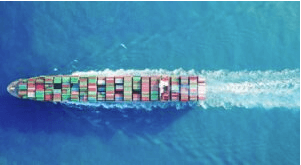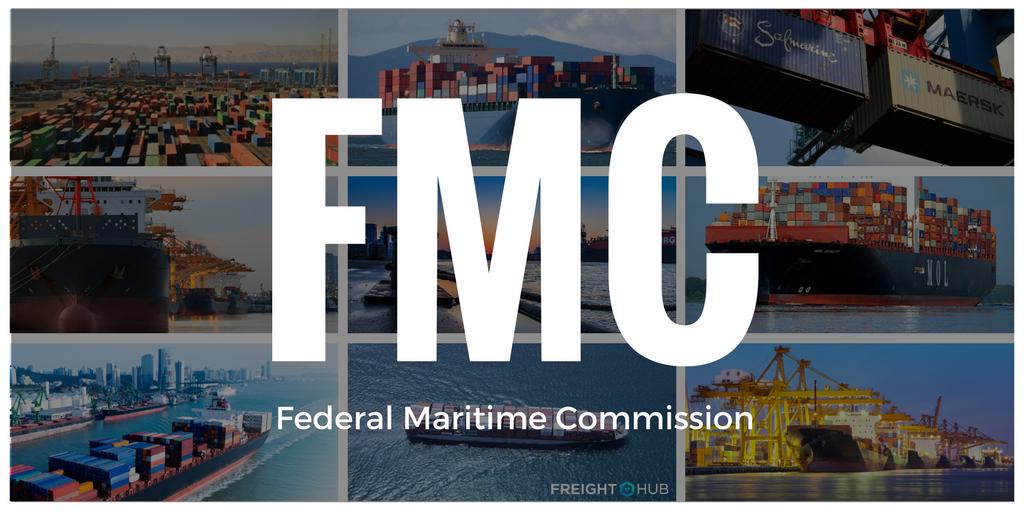-
The Federal Maritime Commission (FMC) was set up in 1961 for regulatory purposes
-
Ocean Transport Intermediary (OTI) could be an NVOCC or Freight Forwarder
-
Licensing with the FMC is mandatory for NVOCCs domiciled in the USA
Shipping conferences were very much a part of the ocean shipping landscape since the first conference, the Calcutta Steam Traffic Conference, set up by British cargo lines came into being in 1875. As part of the shipping conferences, many liner shipping companies operated had the possibility to agree on and set freight rates across various shipping routes covering different regions of the world.
They could implement several policies like allocation of space to certain customers depending on their loyalty to the conference, and in some cases, open pricing contracts.
The USA Congress felt that this could lead to collusion among shipping lines within the conference which would then impose unreasonable increases in freight rates and create unfair trade practices of an anti-competitive nature.
This led to the creation of a body that would monitor and control this practice. This body eventually became the FMC which stands for Federal Maritime Commission.
FMC was set up in 1961 as an independent agency with the prime objective to regulate common carriers by water and other persons involved in the ocean-borne foreign commerce of the United States under the provisions of the Shipping Act of 1984.
What is an FMC tariff, who can file it and who needs an FMC license?
As per the regulations set up by the FMC, anyone operating seaborne and associated services such as VOCC and OTIs must file a tariff with the FMC.
VOCC stands for Vessel Operating Common Carriers. These are generally shipping lines such as Maersk Line and MSC who provide ocean transportation between the USA and other countries in exchange for payment. VOCCs accept the responsibility for such movement from Point A to Point B whereby Point A or B could be an inland location or a pier.
OTI is an Ocean Transport Intermediary who is based in the USA and holds an OTI license issued by the FMC to conduct business in the capacity of a freight forwarder and/or an NVOCC (yes there is a difference between a freight forwarder and NVOCC).
A Freight Forwarder is a multi-function agent/operator who undertakes the management of the movement of goods on behalf of the cargo owner.
NVOCC stands for Non-Vessel Operating Common Carrier. NVOCC offers services and responsibilities similar to that of a VOCC except that an NVOCC issues their own House Bill of Lading (this bill of lading needs to be registered with FMC) but does not operate the vessel. An NVOCC may or may not operate their own container.
As per the Shipping Act of 1984, a person in the United States may not act as an ocean transportation intermediary unless the person holds an ocean transportation intermediary’s license issued by the Federal Maritime Commission.
The tariff or rates that must be filed by a VOCC or NVOCC with the FMC for trades to/from the USA should include:
- Ocean Freight Rates (for both import into USA and export from the USA)
- Any associated surcharges
- Cargo & Commodity classifications/description
- Port pairs (Port of Load & Port of Discharge)
- Sample of the Bill of Lading that will be used for the shipment
The tariff rate is also dependent on the service type that is used such as Door/Door, CY/CY, Rail Ramp, Pier to Pier etc.
As per Title 46 › Subtitle IV › Part A › Chapter 405 › § 40501 of the U.S. Code covering General rate and tariff requirements, the freight rate must be filed with the FMC before the date cargo is received at the origin. While there is no set validity to the rates filed, the rate must have been filed with the FMC at least for a minimum period of 30 days.
Any increase in the rate cannot become effective earlier than 30 days after it has been published. But FMC may allow the rate to become effective sooner, on application. Any decrease, however, may become effective on publication.
As of now, OTI licensing is mandatory for NVOCCs domiciled in the USA but optional for overseas-based NVOCCs.
According to FMC records, there are approximately around 4,500 FMC-licensed OTIs authorized to operate in the US trades, and over 1,700 non-licensed carriers.
How and where is the filing done?
In order to file tariffs with FMC, the OTI or VOCC or NVOCC must first register on the FMC website and use the appropriate forms for filing. Once an OTI license is filed, it doesn’t expire unless it has been surrendered by the OTI or revoked by the Commission due to any irregularities.
Until 2011, VOCCs and OTIs were required to publish rate tariffs electronically and the rates billed to customers were required to be included in these tariffs.
However, in line with the mandate of Former President Obama, the FMC published new regulations (46 CFR Part 532 – NVOCC Negotiated Rate Arrangements) in 2011 which significantly reduced the rate filing requirements for VOCCs and OTIs.
This ruling exempted NVOCCs from publishing their rates in tariffs or filed service contracts provided that the NVOCCs entered into an arrangement called Negotiated Rate Arrangement (NRA) subject to certain conditions being met.
With the ruling, while the rate filing is exempted, the OTIs must still publish the rules, terms and conditions which may include but not limited to
- Definition and classification of heavy lift
- Definition of out of gauge/over dimensional cargo
- Bill of lading charges
- Terms of freight payment – whether prepaid or collect
- House Bill of Lading terms and conditions
- Details of any hazardous cargo
- Details of claim filing and handling
- Expand and define any abbreviations and/or symbols
- Any General Rate Increases envisaged
Non-compliance could include
- undercharging or overcharging on tariffs
- declaring incorrect tariff headings (HS Codes) or cargo description to circumvent duty and taxes
- incorrect cargo description
- manipulating volume and weight information to obtain lower rates
- misuse of service contracts or negotiated rate arrangements
- collusion with other OTIs and sharing of service contracts
Some OTIs may find the rules governing FMC tariff filing and publishing to be complex, but there are several online systems that enable OTIs to meet all FMC tariff filing documentation and compliance requirements.
These systems also allow the OTIs to manage their Service Contracts and tariff rate documents.
Conclusion
The FMC was created to ensure that the American exporters, importers, and consumers were protected from unfair costs which may arise from the activities of liner shipping and other foreign government laws and regulation.
It is in the interest of the VOCC or OTI to ensure that they follow all the FMC regulations in relation to licensing, tariff filing, be compliant and maintain proper records.
Record keeping is an important compliance point for the FMC and as per 46 CFR 532.7, OTIs are expected to maintain original contracts, NRAs for 5 years from the date of performance in a format that is easily accessible and retrievable for the FMC.
If proper records are not maintained, the FMC is mandated to disqualify the OTI and classify it as a violation of the Shipping Act 1984.
Staying compliant is quite important because penalties for non-compliance can be quite severe running into thousands of dollars and could also result in the entity’s license being revoked.
Find out More
As experts in trade, forwarders need to be compliant in all countries they operate. Find out how FreightHub remains compliant by visiting our website. While there, be sure to sign up for our weekly newsletter as well as follow us on Twitter and LinkedIn.
Read more: Agree or disagree? Check out our three big reasons why shippers should consider outsourcing logistics









